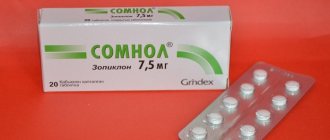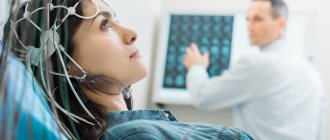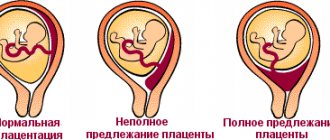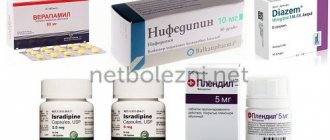Institute of Child Neurology and Epilepsy
Even in the second half of the last, 20th century, epilepsy was considered an incurable disease. The development of neuropharmacology in recent decades, the synthesis of new highly effective antiepileptic drugs (AEDs), a radical revision of many principles of its treatment - all this has now made it possible to classify epilepsy as a disease that can be treated. AEDs are chosen depending on the form of epilepsy and the nature of the attacks.
Treatment should begin with the drug of first choice for this form of epilepsy. The drug is usually prescribed in a small initial dose with a gradual increase until an optimal clinical effect occurs or initial signs of overdose occur. If the drug is ineffective, it is gradually discontinued and the next one is prescribed; however, you cannot immediately switch to a combination of drugs without using all the reserves of monotherapy.
Valproic acid preparations (Convulsofin, Depakine, etc.) are one of the most effective groups of AEDs.
Convulsofin is the calcium salt of valproic acid. This is a modern drug with a wide spectrum of action; it is highly effective in almost all forms of epilepsy and types of epileptic seizures. Currently, more than 20 years of experience in the use of valproates indicates that they are the drugs of absolute choice in the treatment of most forms of generalized and idiopathic partial epilepsy. It has now been proven that Convulsofin has a wide range of antiepileptic activity, both in relation to primary generalized seizures (generalized convulsive, myoclonic, absence seizures), and partial (simple and complex) and secondary generalized paroxysms. At the same time, Convulsofin is used as a basic drug as monotherapy and in combination with other AEDs in children and adults of all ages.
Dosages of Convulsofin are selected individually and vary over a wide range. The average dose can be 600-1500 mg/day (20-40 mg/kg/day). If necessary and in severe forms, significantly higher doses are used. Among the side effects (AE) of valproate, the most significant are the following: increased appetite and weight (rarely refusal to eat), heartburn, nausea, abdominal pain, mild hair loss, hand tremors. It is necessary to monitor the level of platelets in the blood (they may decrease). If PE occurs, you should consult your doctor; however, it is not always necessary to discontinue the drug.
Drugs of the carbamazepine group (Finlepsin, Finlepsin - retard, Tegretol) are also modern, highly effective AEDs. Finlepsin is the drug of choice in the treatment of symptomatic partial forms of epilepsy; with partial, primary and secondary generalized seizures. It is used both in monotherapy and as an additive drug. It should be remembered that carbamazepine drugs are contraindicated for absence seizures and myoclonic seizures. The average daily dose is 400-800 mg (about 20 mg/kg/day). Preference in treatment is given to prolonged forms, such as Finlepsin retard. Main adverse events: double vision, drowsiness, skin rash, headache, decreased level of leukocytes in the blood.
Ethosuximide (Suxilep). Suxilep is a narrow-spectrum drug. It is highly effective in absence and myoclonic seizures, both in monotherapy and in combination with valproate (Convulsofin). In some forms of epilepsy, for example, Lennox-Gastaut syndrome, Suxilep can only be used in combination with other AEDs. Average doses: 500-750 mg/day (about 20 mg/kg/day). PE: nausea, intestinal disorders, drowsiness. It is noteworthy that the drug passes into breast milk in large quantities. Women taking suxilep during lactation should avoid breastfeeding.
Topiramate (Topamax) is a broad-spectrum drug. Effective for all types of partial seizures, as well as generalized convulsive ones. It is used in the treatment of partial and generalized forms of epilepsy with the presence of convulsive attacks. Average doses: 5-7 mg/kg/day (200-400 mg/day). It is necessary to slowly increase the dose when administering the drug (usually over 6-10 weeks). AEs depend mainly on the dose of topiramate and are associated with dysfunction of the central nervous system: dizziness, fatigue, drowsiness, irritability, decreased concentration. These manifestations usually disappear soon after the next dose increase. Paresthesia (a crawling sensation) may also occur. To prevent the occurrence of kidney stones, patients should increase their daily fluid intake (alkaline mineral waters). The drug is contraindicated in patients with impaired renal function and kidney stone disease.
Benzodiazepines (clonazepam, antelepsin, clobazam, seduxen, radedorm, lorafen, etc.). Benzodiazepines are used only as adjunctive AEDs for resistant forms of epilepsy. Particularly effective for myoclonic and photosensitivity forms of epilepsy. Also prescribed for serial increases in attacks, as first aid medications. They have a wide range of adverse effects, primarily in relation to the central nervous system: pronounced sedation, impaired concentration, depression or agitation, unsteadiness, speech disorder, drooling, breathing problems in young children. It is strictly forbidden to abruptly discontinue benzodiazepines in patients with epilepsy - there is a threat of increased frequency of attacks and the development of epistatus.
“Old” AEDs: barbiturates (phenobarbital, hexamidine, benzonal) and hydantoins (difenin, phenytoin, difantoin). Effective in the treatment of generalized convulsive and partial seizures. Phenobarbital is used in a dose of 100-300 mg/day (2-5 mg/kg/day), and Diphenin - in a dose of 100-400 mg/day (3-8 mg/kg/day). In 1998, the European Commission on Antiepileptic Drugs recommended that doctors significantly narrow the indications for the use of these drugs in patients with epilepsy. The reason for this is the negative impact of these drugs on the central nervous system: lethargy, drowsiness, difficulty concentrating, hyperactivity, decreased learning ability, etc. Difenin is a teratogenic drug that often causes developmental defects in newborns. It is contraindicated for use during pregnancy.
New antiepileptic drugs include topiramate, lamotrigine, tiagabine, vigabatrin, felbamate, and levetiracetam.
It should be remembered that there are no universal drugs that would be highly effective in all cases, would not produce side effects (SE) and would be inexpensive. Prescribing a specific drug, selecting dosages, adding or removing AEDs should only be done by the attending physician. Failure to comply with recommendations and independent manipulation of medications can lead to serious consequences for patients, including the development of status epilepticus.











